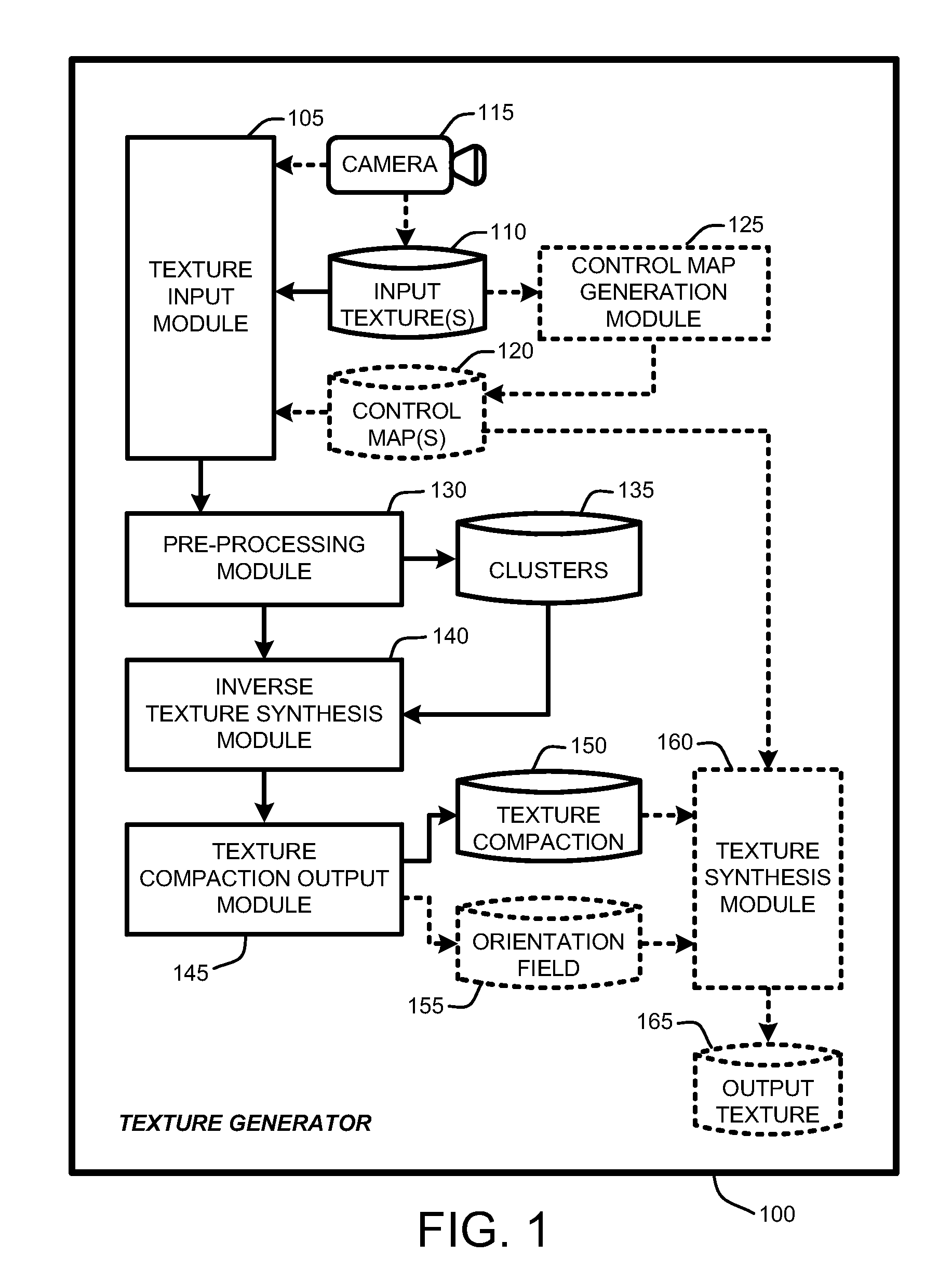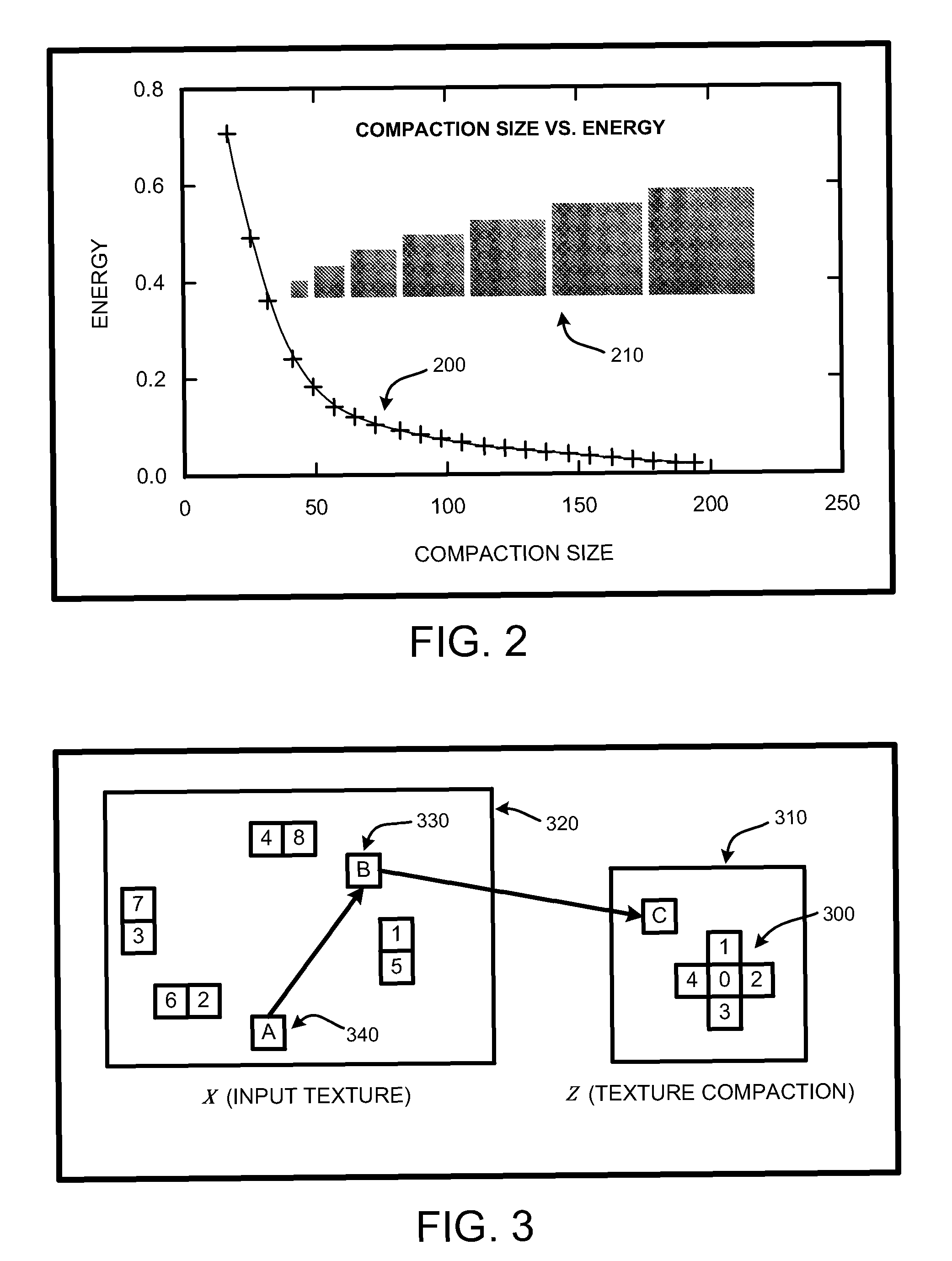Inverse texture synthesis
a texture and synthesis technology, applied in the field of texture generators, can solve the problems of not all textures are homogeneous, and the techniques are often unable to reproduce the richness of natural phenomena, etc., to achieve the effect of reducing the size of the texture compaction, and speeding up the synthesis
- Summary
- Abstract
- Description
- Claims
- Application Information
AI Technical Summary
Benefits of technology
Problems solved by technology
Method used
Image
Examples
Embodiment Construction
[0027]In the following description of the embodiments of the claimed subject matter, reference is made to the accompanying drawings, which form a part hereof, and in which is shown by way of illustration specific embodiments in which the claimed subject matter may be practiced. It should be understood that other embodiments may be utilized and structural changes may be made without departing from the scope of the presently claimed subject matter.
[0028]1.0 Introduction:
[0029]In general, a “texture generator” uses an inverse texture synthesis solution that runs in the opposite direction to traditional forward synthesis techniques to construct small 2D “texture compactions.” These texture compactions are then stored and made available for use by a graphics processing unit (GPU) or other specialized microprocessor of a computer system for use in forward texture synthesis applications (i.e., generating new textures or images from the texture compaction). For computing the texture compact...
PUM
 Login to View More
Login to View More Abstract
Description
Claims
Application Information
 Login to View More
Login to View More - R&D
- Intellectual Property
- Life Sciences
- Materials
- Tech Scout
- Unparalleled Data Quality
- Higher Quality Content
- 60% Fewer Hallucinations
Browse by: Latest US Patents, China's latest patents, Technical Efficacy Thesaurus, Application Domain, Technology Topic, Popular Technical Reports.
© 2025 PatSnap. All rights reserved.Legal|Privacy policy|Modern Slavery Act Transparency Statement|Sitemap|About US| Contact US: help@patsnap.com



